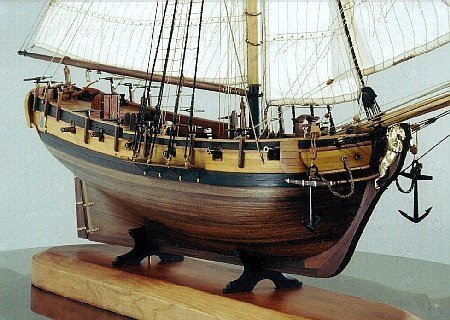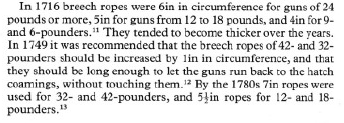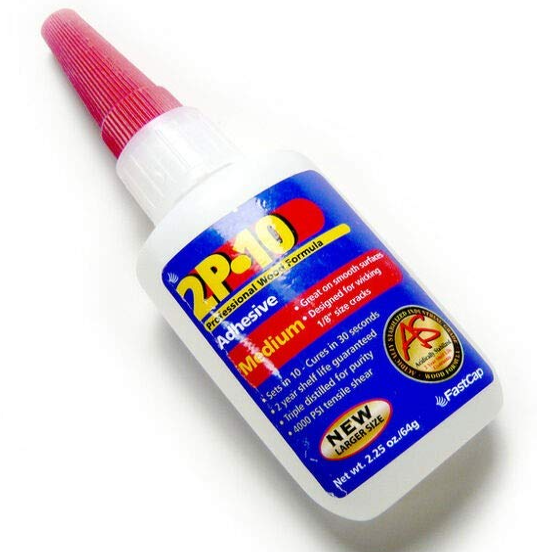-
Posts
3,139 -
Joined
-
Last visited
Content Type
Profiles
Forums
Gallery
Events
Everything posted by Gregory
-
Not aimed at you in particular, but just curious for Winchelsea builders in general, there is so much detail with the cap squares and all but the trucks are rather lacking in detail; no pins through the axles, no bolts . Any thoughts?
- 840 replies
-
- winchelsea
- Syren Ship Model Company
-
(and 1 more)
Tagged with:
-
Correct Glue
Gregory replied to Blacklab's topic in Painting, finishing and weathering products and techniques
My two favorites are: Modeler's Sawmill One of our sponsors. Has somewhat limited species selection, but very nice stuff, particularly the Alaskan yellow cedar. Ocooch Hardwoods While Ocooch does not have pear, boxwood or Alaskan yellow cedar, they have a greater variety of other woods. They do not have all the thickness options that Modelers Sawmill does. -
Correct Glue
Gregory replied to Blacklab's topic in Painting, finishing and weathering products and techniques
You can purchase whatever you like. Glenn is recommending Bob Smith. He has used it successfully for many years and you can look at his build logs for examples of his fine work. I really like the Bob Smith product also. I have also had very good results with a brand called 2P-10. If you decide to use the Gorilla brand, you can let us know how it works for you. I don't recall that anyone else has talked about using it. -
The clinker effect is because the planks are not laying flat on the bulkheads. The only way to achieve this is by edge bending or spiling. Hve you looked at Chuck's planink videos. They will show you all you need to know about edge bending. This guide by David Antscherl will show you about spilling. https://thenrg.org/resources/Documents/articles/APrimerOnPlanking.pdf I meant to add that spiling can be problematic with kits, because it requires wider stock than the uniform width planks provided in the kit. Since this is the first layer, it is a good opportunity to practice what you want to do with the second layer. Now is the time to make mistakes, and correct them with lessons learned.
-
It's a curiosity. I wouldn't have the time to slog through it..
- 17 replies
-
- Book
- great britain
-
(and 1 more)
Tagged with:
-
No good reason to upload it here, since it is free to download at the link provided..
- 17 replies
-
- Book
- great britain
-
(and 1 more)
Tagged with:
-
Deck planking plans
Gregory replied to KingDavid's topic in Building, Framing, Planking and plating a ships hull and deck
Interesting that the plans above show a sort of " anchor stock " shape in some of the planks. .. I have never seen that in deck planking before.. -
Who's going to call you on this if you get it wrong? 😁
- 553 replies
-
- sloop of war
- constellation
-
(and 3 more)
Tagged with:
-
I think CA has got a bad rep because people think of bad experiences with really thin stuff that goes everywhere. Using a medium or thick CA in small amounts, in the right place, is as good as using nails. Making sure the plank is the shape you want before you glue it down is another important consideration.. I also like the idea of partial filling to thicken the bulkheads to help with providing a larger surface. Some people frown on double planking, but really, what's the difference in an extra layer of planks for smoothing and fairing or a lot more bulkheads or frames that provide a more continuous surface?
-
Don't use pins/nails.😁 I would look at some of the Winchelsea builds, like Chuck's: And Glenn Barlow's They go into a lot of detail about how they plan and execute the planking. I believe they both use CA glue for planking. Tapering, edge bending and spiling will be important. You might be at a disadvantage with the relatively fewer bulkheads, unless you do some filling. Fairing will also be important.
-
Model Expo has these plans. Model Shipways CHARLES MORGAN PLANS Can't tell how closely they will match your model, but they should be a good place to start. They may add detail that your model didn't have.
-
I didn't get that impression at all. And I hope Chris doesn't get the impression I feel his instructions are lacking. I was just trying to make sure you did not feel your lack of knowledge about the shaping of the stem, other than what was provided in the kit was something to feel worried about. There are details about these ships that 99% of kit builders will never be aware of.
- 102 replies
-
- Flirt
- Vanguard Models
-
(and 1 more)
Tagged with:
-
I suspect a good reason, is that it is not mentioned in the otherwise comprehensive instruction manual.. Great job, so far Doug. It says a lot for Chris and Vanguard that people relatively new to the hobby can have such good results. These kits are so much better than anything else out there, and few this side of Syren will mention tapering the stem...
- 102 replies
-
- Flirt
- Vanguard Models
-
(and 1 more)
Tagged with:
About us
Modelshipworld - Advancing Ship Modeling through Research
SSL Secured
Your security is important for us so this Website is SSL-Secured
NRG Mailing Address
Nautical Research Guild
237 South Lincoln Street
Westmont IL, 60559-1917
Model Ship World ® and the MSW logo are Registered Trademarks, and belong to the Nautical Research Guild (United States Patent and Trademark Office: No. 6,929,264 & No. 6,929,274, registered Dec. 20, 2022)
Helpful Links
About the NRG
If you enjoy building ship models that are historically accurate as well as beautiful, then The Nautical Research Guild (NRG) is just right for you.
The Guild is a non-profit educational organization whose mission is to “Advance Ship Modeling Through Research”. We provide support to our members in their efforts to raise the quality of their model ships.
The Nautical Research Guild has published our world-renowned quarterly magazine, The Nautical Research Journal, since 1955. The pages of the Journal are full of articles by accomplished ship modelers who show you how they create those exquisite details on their models, and by maritime historians who show you the correct details to build. The Journal is available in both print and digital editions. Go to the NRG web site (www.thenrg.org) to download a complimentary digital copy of the Journal. The NRG also publishes plan sets, books and compilations of back issues of the Journal and the former Ships in Scale and Model Ship Builder magazines.







